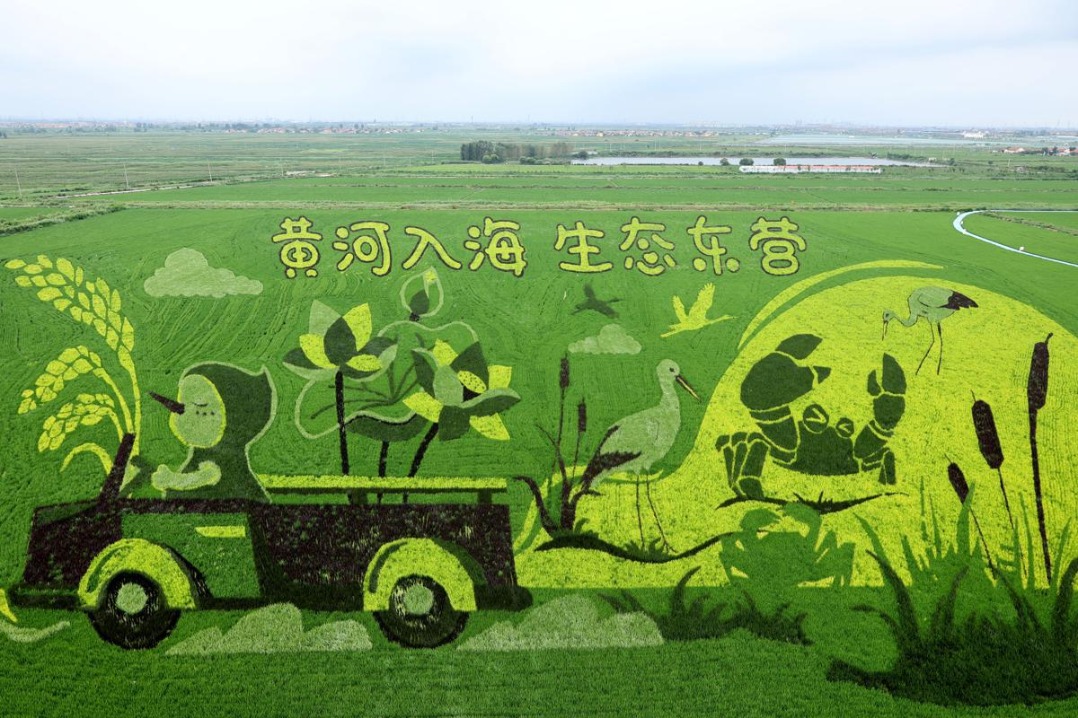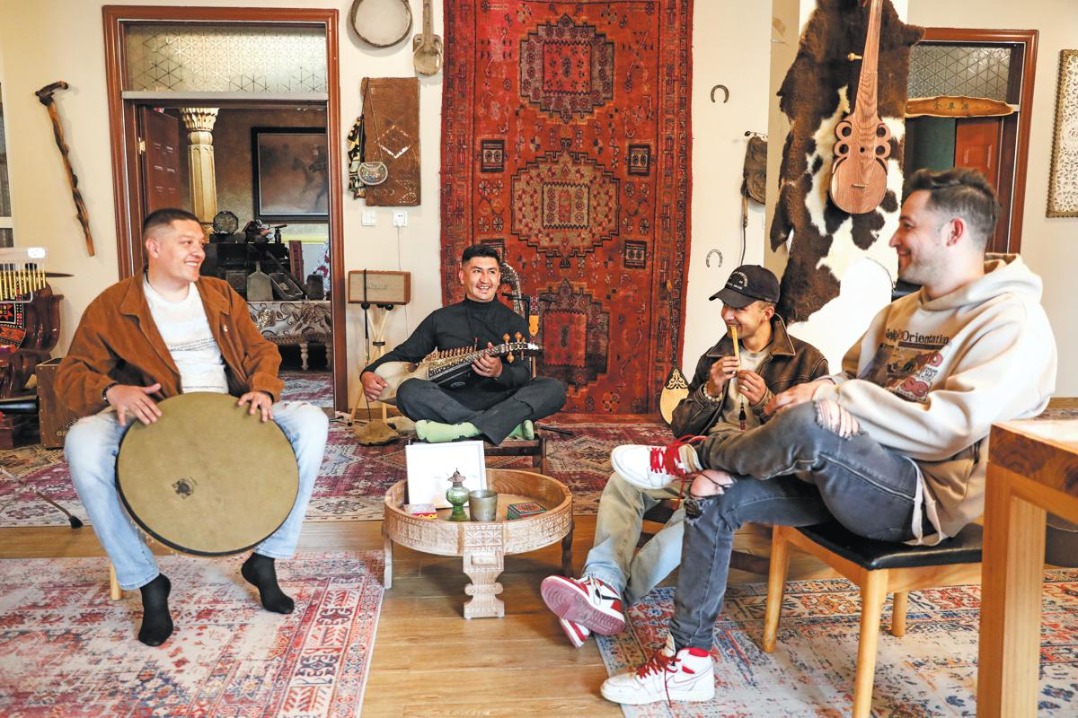Transforming barren deserts into pockets of power

Through long-term field observations and experiments, researchers have discovered the shell-like organisms known as biological soil crusts that appear in grass grid sand barriers can firmly "seal up" shifting desert sands.
"Biological soil crusts play a crucial role in sand surface stabilization, land desertification restoration and desert ecosystem biodiversity maintenance, earning them the title of 'desert ecosystem engineers'," said Zhao Yang, a researcher at the Northwest Institute of Eco-Environment and Resources of the Chinese Academy of Sciences. "Their formation and development are important indicators of surface stability and ecosystem recovery in desert areas."
It takes 10 to 20 years for biological soil crusts to form under natural conditions, but at the Shapotou Desert Research and Experiment Station of the Chinese Academy of Sciences, researchers have developed artificial blue-green algae crust technology that substantially accelerates the process. Zhao said this would not have been possible without the grass grids, which reduce wind speed, prevent the movement of sand and create a safe harbor for micro-organisms. By spraying artificially cultivated blue-green algae liquid within the grass grids, a stable blue-green algae crust layer can be formed within two to three years.
"In dry conditions without water, algae enter a dormant state, but when they encounter water under ideal conditions, they revive. We use this method to store and cultivate blue-green algae. When needed, we rehydrate them and spray them on the sand surface," said researcher Xu Wenwen.
Blue-green algae can grow and reproduce under harsh conditions such as high temperatures, drought, strong UV radiation and nutrient-poor environments. Zhao's team has identified seven dominant species of blue-green algae with good adaptability to desert environments.
Artificial biological soil crusts have played an important role in China's sand-control actions, especially in areas along the Yellow River, which forms a large Chinese character " " shape on the vast landscape of the Kubuqi Desert in western Inner Mongolia. The site is home to China's largest individual-scale photovoltaic desert control project, which produces approximately 4.1 billion kilowatt-hours of green electricity annually, saving about 1.23 million metric tons of standard coal each year while reducing carbon dioxide emissions by approximately 3.19 million tons.
"With vast desert areas and abundant sunshine, Kubuqi provides the necessary land and sunlight resources for photovoltaic power generation. The photovoltaic panels block direct sunlight, reduce desert water evaporation and lower wind speeds, thereby improving the ecological environment for plants," said project construction leader Zhao Jinquan, explaining how photovoltaics complement desert control procedures.
Implementing engineering projects in desolate deserts is no easy task. In Kubuqi, hundreds of bulldozers were used to level the sand dunes before installing 4.4 million photovoltaic panels fixed with 570,000 pile legs. To assist in laying out the panels, reeds played a crucial role in windbreak and sand fixation. Workers spread reeds across the area, and drones evenly scattered seeds of grasses and shrubs that can grow in the photovoltaic field.
Several innovative technologies have been applied at the site, such as dual-sided power generation on panels using double-glass components that increase electricity generation by up to 10 percent. As well, workers have planted high-quality grass and medicinal crops under the photovoltaic panels, and they raise chickens and sheep on-site.
Project engineering leader Wang Jiye said the Kubuqi photovoltaic desert control project is one of the first in China to widely apply flexible support materials in desert areas.
?
- Y-20 planes deliver Air Force freshmen
- Guizhou sorghum harvest fuels baijiu production
- Beijing issues geological disaster warnings and flood control responses
- Rice paddy art celebrates history and ecology in Shandong
- European scholars praise research environment in China
- Northern China universities secure spots at 2025 World Humanoid Robot Games





































